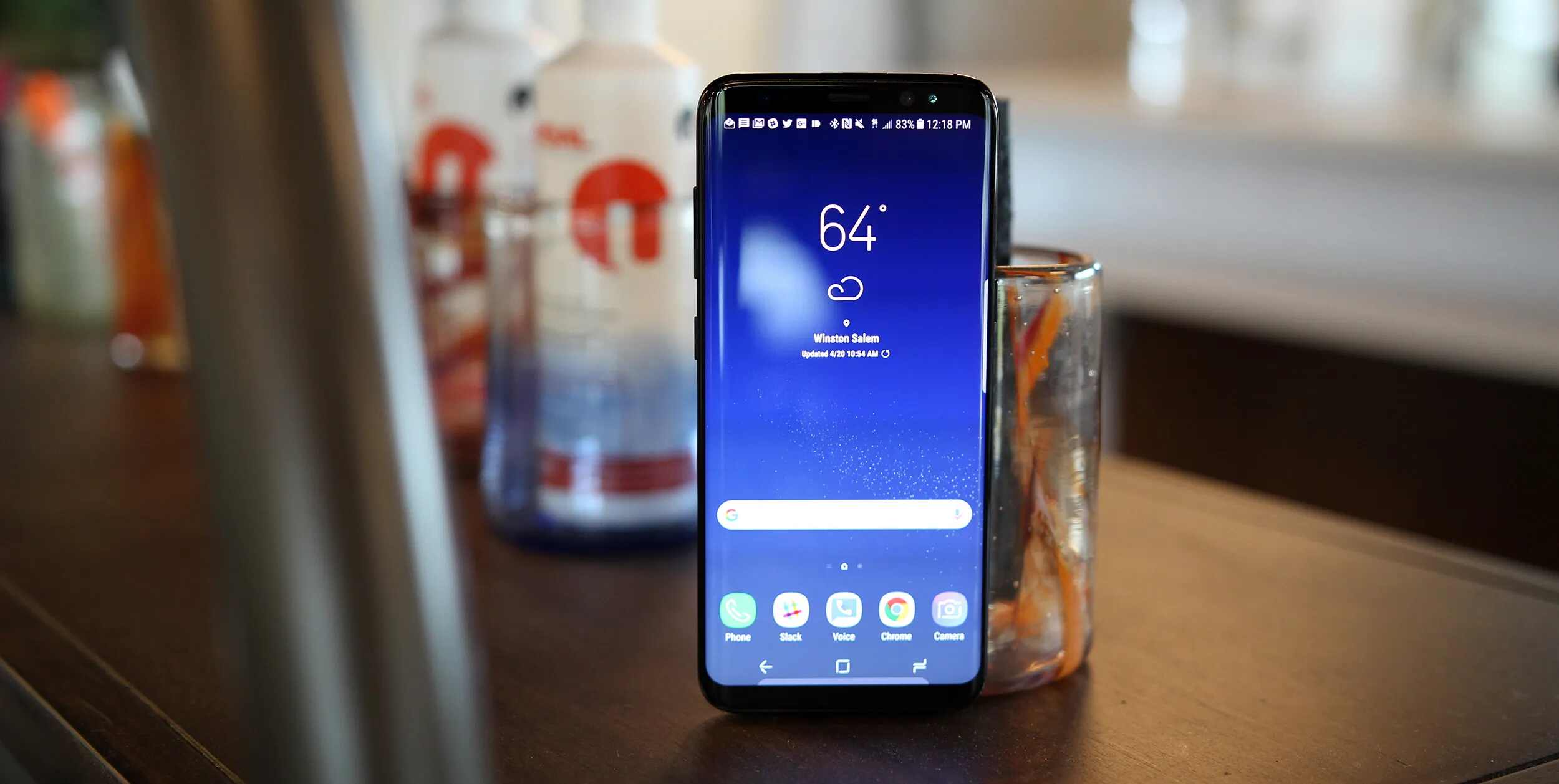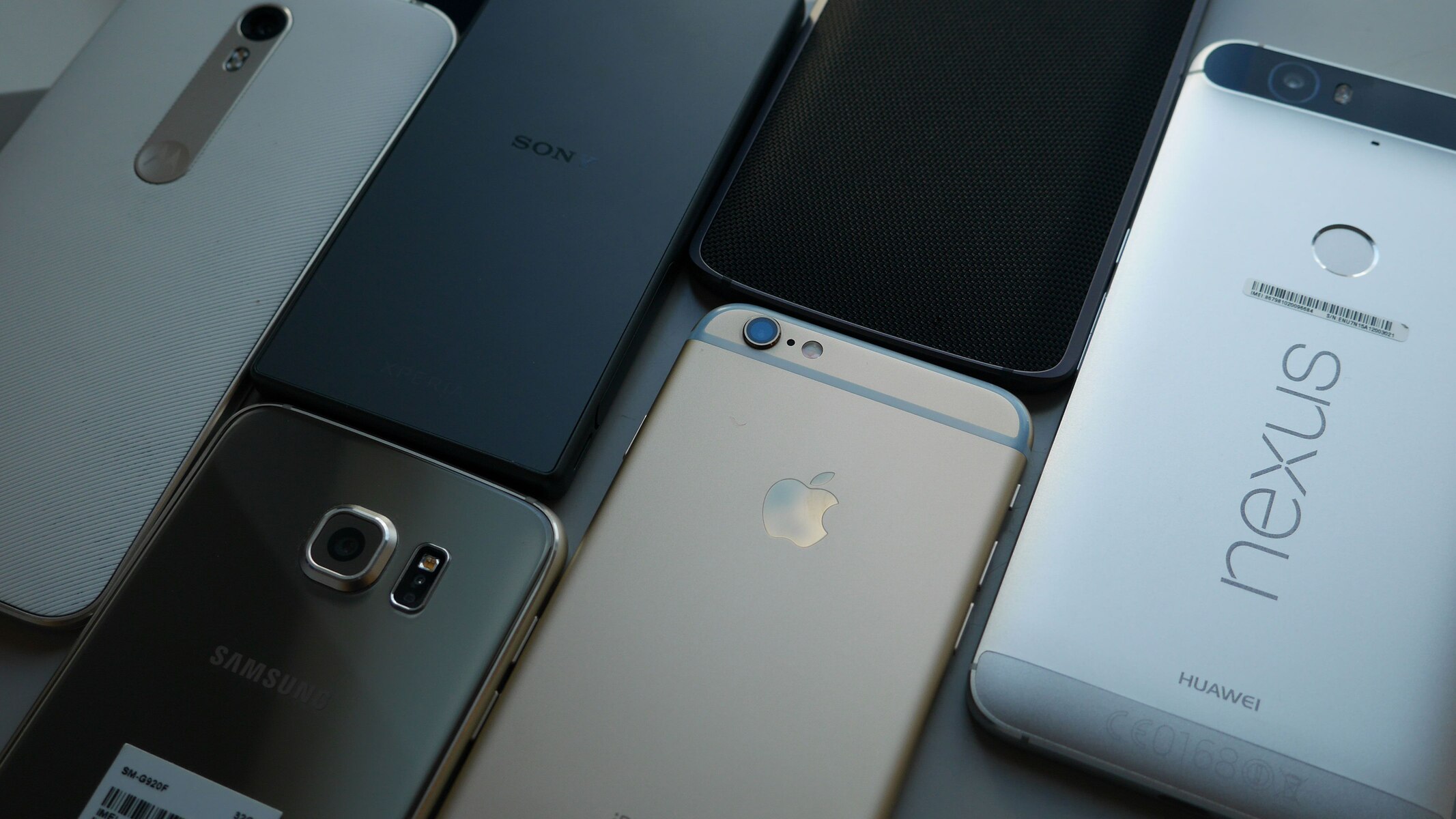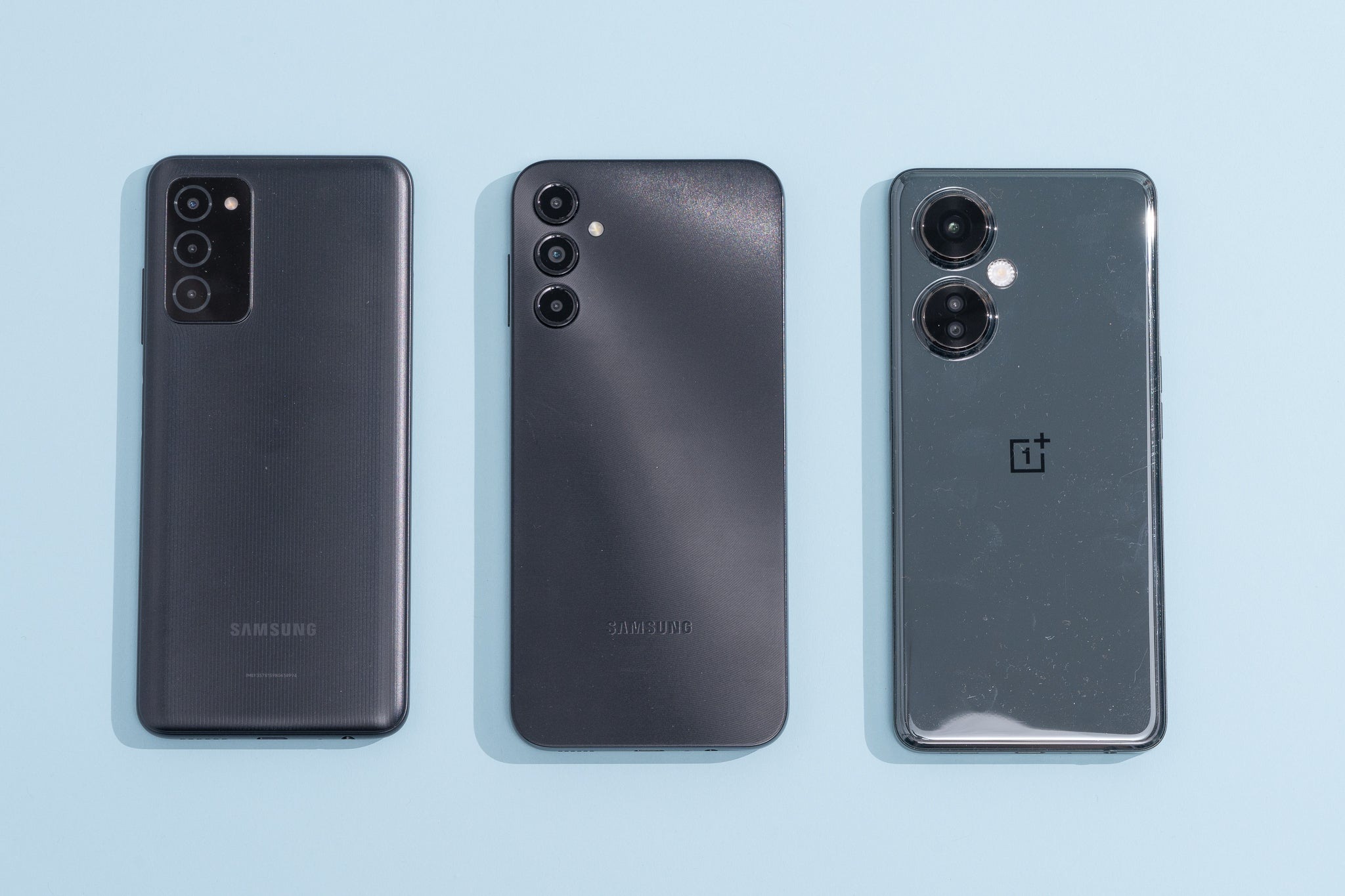Introduction
Building a smartphone app has become an essential step for businesses and individuals looking to enhance their digital presence and connect with a wider audience. With millions of mobile apps available in various app stores, creating an app that stands out and delivers a seamless user experience is crucial for success.
In this article, we will guide you through the process of building a smartphone app, covering everything from choosing the right platform and defining app features to testing and app store submission. Whether you’re a beginner or have some experience in app development, this comprehensive guide will provide you with valuable insights and practical tips to help you build an app that meets your goals.
Before diving into the development process, it’s important to have a well-defined app concept and understand your target audience. Identify the purpose and functionality of your app – whether it’s for e-commerce, social networking, content consumption, or utility – and outline the features you want to include. This will serve as a roadmap throughout the development process, ensuring that you stay focused and deliver a valuable app to your users.
Choosing the right platform is a critical decision that will determine the user base and the development approach. The two main platforms to consider are iOS and Android, each with its own advantages and considerations. iOS caters to a more affluent user base and offers a streamlined development process through Apple’s Xcode and Swift programming language. Android, on the other hand, has a larger market share and offers more flexibility in terms of device compatibility and customization through Android Studio and Java/Kotlin programming languages.
Once you have chosen a platform, you’ll need to define the app’s features and functionality. Consider what actions users can perform within the app, such as creating an account, browsing products, making purchases, messaging other users, or accessing certain information. By clearly defining these features, you can ensure a seamless user experience and prioritize development efforts accordingly.
With the concept, platform, and features in mind, the next step is to create a wireframe and design for your app. A wireframe is a visual representation of the app’s layout and functionality, serving as a blueprint for the development process. The design phase involves creating a visually appealing interface that aligns with your brand and offers intuitive navigation. Keep in mind the importance of responsive design – your app should adapt to different screen sizes and orientations for a consistent user experience.
Now that the planning and design are complete, it’s time to move into the development phase. Front-end development involves implementing the user interface and features using appropriate programming languages, frameworks, and tools. Back-end development focuses on building the server-side infrastructure and integrating databases and APIs to enable app functionality such as user authentication, data storage, and retrieval.
To enhance your app’s functionality and provide additional features, you may need to integrate APIs and third-party services. This could include incorporating social media logins, payment gateways, location services, push notifications, or analytics tools. Carefully selecting and integrating these APIs will enhance the user experience and optimize app performance.
Choosing the Right Platform
When it comes to building a smartphone app, one of the key decisions to make is choosing the right platform. Today, the two major platforms dominating the mobile app market are iOS and Android. Each platform has its own unique characteristics and considerations, which you need to evaluate before making a choice. In this section, we’ll explore some factors to consider when choosing the right platform for your app.
1. Target Audience: Understanding your target audience is crucial in deciding which platform to prioritize. iOS users tend to be more affluent, while Android users are more diverse and spread across various income levels. Research and analyze your target audience to determine which platform aligns best with your app’s goals and target market.
2. User Experience: Both iOS and Android offer great user experiences, but they have different design philosophies. iOS follows a more uniform and consistent design language, offering a sleek and intuitive interface. Android, on the other hand, provides more customization options and allows for greater flexibility in terms of design. Consider the design aesthetics that align with your app’s branding and the expectations of your target audience.
3. Development Process: Consider the development process for each platform and the resources you have available. iOS development generally requires expertise in Apple’s Xcode and the Swift programming language. On the other hand, Android development uses Android Studio and can be done in Java or Kotlin. Evaluate your own technical skills and the availability of developers in your team or the market when considering the development process for each platform.
4. Time to Market: If you have a tight timeline and want to get your app to market quickly, consider the average app review and approval times for each platform. iOS typically has a more stringent review process, which can result in longer review times. Android, on the other hand, allows for faster submission and review times. Keep in mind that these times can vary, so do your research and plan accordingly.
5. Revenue Model: Different platforms have different monetization options. iOS users tend to spend more on in-app purchases, making it an attractive platform for monetization through app sales and subscriptions. Android, on the other hand, has a larger user base, which can lead to higher ad revenue and potential for in-app purchases. Consider your revenue model and the platform that aligns best with your monetization strategy.
Remember, choosing the right platform is not a one-size-fits-all decision. It depends on your app’s goals, target audience, design preferences, development resources, and revenue strategy. Analyze the factors mentioned above and make an informed decision that aligns with your app’s objectives. By selecting the right platform, you’ll be on the path to building a successful smartphone app.
Defining App Features and Functionality
Defining the features and functionality of your smartphone app is a critical step in the development process. A well-defined set of features ensures that your app meets the needs of your target audience and provides a seamless user experience. In this section, we will explore the key considerations to keep in mind when defining the features and functionality of your app.
1. User Needs: Start by identifying the needs of your target audience. What problem does your app solve for them? Understand their pain points, challenges, and goals to determine the features that will address those needs. Conduct user research, surveys, and usability tests to gather insights and validate your assumptions.
2. Core Functionality: Define the core functionality that is essential for your app’s success. What are the main actions users will perform within the app? For example, a social networking app may have features such as creating a profile, connecting with friends, and posting content. Prioritize these features and ensure they provide a seamless and intuitive user experience.
3. Additional Features: Consider additional features that can enhance the user experience and provide added value. These features could include in-app messaging, push notifications, social media integration, user customization options, or location-based services. Be cautious not to overload your app with unnecessary features that may confuse or overwhelm users. Focus on features that truly add value and align with your app’s purpose.
4. Intuitive Navigation: Ensure that the navigation within your app is intuitive and user-friendly. Users should be able to easily find and access the different features and sections within the app. Use clear labels, logical navigation patterns, and intuitive gestures to improve usability.
5. Performance Optimization: In addition to functionality, prioritize the performance of your app. Slow loading times, crashes, and laggy experiences can lead to user frustration and abandonment. Optimize your app to be fast, responsive, and reliable. Take into account factors such as image compression, caching, and efficient data storage to deliver a smooth user experience.
6. Scalability: Consider the potential for future growth and scalability. Will your app be able to handle increased user traffic and data? Ensure your app’s architecture and backend infrastructure can scale to accommodate future needs. This will save you time and resources in the long run.
7. Third-Party Integrations: Evaluate the need for integrating third-party services and APIs into your app. This could include social media logins, payment gateways, mapping services, or analytics tools. Choose reliable and secure third-party services that align with your app’s functionality and enhance the overall user experience.
By thoroughly defining the features and functionality of your smartphone app, you set the foundation for a successful development process. It ensures that your app meets the needs of your target audience, provides a seamless user experience, and delivers value. Take the time to research, gather user feedback, and make informed decisions. This will help you build an app that resonates with your users and achieves your app’s goals.
Creating a Wireframe and Design
Creating a wireframe and design is a crucial step in the smartphone app development process. A wireframe is a visual representation of your app’s layout and functionality, while the design focuses on creating an aesthetically pleasing interface that aligns with your brand and offers intuitive navigation. In this section, we will explore the key steps involved in creating a wireframe and design for your app.
1. Identify User Flows: Start by identifying the different user flows within your app. Consider how users will navigate through the various screens and interact with different features. Map out the user journey and define the key interactions and transitions.
2. Sketch the Wireframe: Begin by sketching a rough layout of your app’s screens on paper or using digital tools. This helps you visualize the overall structure and placement of elements. Focus on the key components such as navigation menus, content sections, and interactive elements. Keep in mind the importance of simplicity and clarity in the wireframe.
3. Use Wireframe Tools: Once you have a rough sketch, utilize wireframe tools to create a digital representation of your app’s wireframe. Popular wireframe tools include Balsamiq, Sketch, Adobe XD, and Figma. These tools provide a range of pre-built elements and intuitive features to help you create a polished wireframe.
4. Design the User Interface: After finalizing the wireframe, move on to designing the user interface (UI) of your app. Consider your branding elements, such as colors, typography, and graphic elements, and incorporate them into the design. Ensure a visually appealing and consistent UI across all screens. Pay attention to the placement of buttons, navigation elements, and content to ensure a seamless flow.
5. Responsive Design: With the increasing variety of screen sizes and orientations, it’s important to design your app with responsive design principles in mind. Your app should adapt to various devices and screen sizes, providing a consistent user experience across different platforms.
6. Prototype and Test: Once the design is complete, create a prototype of your app to test the usability and functionality. Tools like InVision, Marvel, and Proto.io allow you to create interactive prototypes that simulate user interactions. Conduct user testing to gather feedback and identify any areas that may need improvement or adjustment.
7. Iterate and Refine: Based on user feedback and testing, iterate and refine your design. Continuously evaluate the usability and effectiveness of your app’s interface. Make enhancements and adjustments to ensure an intuitive and engaging user experience.
Creating a wireframe and designing the interface of your app is a critical step in bringing your app idea to life. It lays the foundation for the development process and ensures a cohesive and user-friendly experience. Invest time in thoughtful wireframing and design to create an app that not only looks great but also offers an intuitive and enjoyable experience for your users.
Front-end Development
Front-end development is a crucial part of the smartphone app development process. It involves implementing the user interface (UI) and user experience (UX) design into a functional app using programming languages, frameworks, and tools. In this section, we will explore the key steps involved in front-end development for your smartphone app.
1. Selecting the Development Tools: Before diving into coding, choose the appropriate development tools for your app. The choice of tools depends on the platform and development language you’ve chosen. For iOS development, Xcode with Swift is commonly used, while Android development utilizes Android Studio with Java or Kotlin. These IDEs provide a range of features to assist with coding, debugging, and testing.
2. Implementing UI Design: Begin by implementing the UI design created during the wireframe and design phase. Translate the design elements, such as buttons, menus, and content sections, into actual code. Use CSS for web-based apps or styling frameworks like UIKit for iOS and Material Design for Android. Ensure consistent styling and positioning of UI elements across different screens and resolutions.
3. Developing Interaction and Navigation: Implement the interaction and navigation features defined in the wireframe. This includes creating navigation menus, buttons, gestures, and transitions between screens. Use appropriate event handling techniques and integrate user input to ensure a smooth user experience.
4. Integrating APIs: If your app requires data from external sources or services, such as retrieving information from a database or interacting with third-party APIs, implement the necessary code to integrate these services. This may involve making HTTP requests, parsing JSON data, and handling authentication.
5. Optimizing Performance: Pay attention to app performance during front-end development. Optimize loading times, minimize resource consumption, and use caching techniques to ensure a smooth and responsive app experience. Compress images, minimize network requests, and optimize code for quicker execution.
6. Testing and Debugging: Test your app thoroughly during the front-end development phase. Use tools and frameworks for automated testing, such as XCTest for iOS or Espresso for Android. Additionally, conduct manual testing to identify any bugs, usability issues, or compatibility problems. Debug and fix any issues that arise to ensure a stable and reliable app.
7. Responsive Design: Ensure that your app is responsive and adaptable to different device sizes and orientations. Use responsive design techniques such as flexible layouts, media queries, and adaptive components to create a consistent app experience across various screen sizes and resolutions.
Front-end development brings your app’s design to life and ensures a seamless user experience. By implementing the UI elements and interactions defined in the design phase, you create a functional and visually appealing app. Pay attention to performance optimization and thorough testing to deliver a high-quality app that meets the expectations of your users.
Back-end Development
Back-end development plays a crucial role in the smartphone app development process, as it handles the server-side infrastructure and functionality that powers your app. In this section, we will explore the key steps involved in back-end development for your smartphone app.
1. Selecting the Back-End Technology: Choose the appropriate back-end technology stack based on your app’s requirements and your team’s expertise. Popular back-end technologies include programming languages like Python, Node.js, or Ruby, and frameworks such as Django, Express.js, or Ruby on Rails. Consider factors like scalability, performance, security, and ease of development when making your selection.
2. Database Design: Design and create your app’s database schema based on the data requirements identified during the planning phase. Choose a suitable database management system (DBMS) such as MySQL, PostgreSQL, or MongoDB, depending on your data structure and scalability needs. Define the tables, relationships, and data models necessary for your app’s functionality.
3. API Development: Create APIs (Application Programming Interfaces) that will allow communication between your app’s front-end and back-end. Build API endpoints that enable your app to retrieve or send data to the server. Use RESTful practices to design clear and consistent API endpoints that adhere to industry standards.
4. User Authentication and Security: Implement user authentication and security measures to safeguard user data and prevent unauthorized access. Use encryption and hashing techniques to protect sensitive information such as passwords. Implement secure login and registration processes, and handle session management and user privileges appropriately.
5. Data Storage and Retrieval: Store and retrieve data from your app’s database based on user actions or data requests. Design efficient algorithms and SQL queries to fetch and manipulate data. Implement caching techniques to improve performance and reduce the load on your database.
6. Integration of Third-Party Services: If your app requires integration with external services or APIs like payment gateways, social media platforms, or mapping services, implement the necessary code to connect and interact with these services. Follow their documentation and guidelines to ensure smooth integration and functionality.
7. Testing and Bug Fixing: Thoroughly test your app’s backend functionality to identify any bugs, errors, or vulnerabilities. Use testing frameworks and tools to automate testing processes and ensure the stability and reliability of your back-end code. Monitor and log errors to proactively identify and fix any issues that may arise.
Back-end development lays the foundation for your app’s functionality and ensures smooth communication between the front-end and back-end components. By implementing secure authentication, efficient data storage, and seamless integration with third-party services, you create a robust and reliable back-end infrastructure for your app. Test rigorously, fix any bugs, and optimize performance to deliver a high-quality and user-friendly experience to your app’s users.
Integrating APIs and Third-Party Services
Integrating APIs and third-party services is a crucial aspect of smartphone app development that allows you to enhance the functionality and user experience of your app. By leveraging existing services and APIs, you can add value to your app and provide users with seamless access to a range of features and data. In this section, we will explore the key steps involved in integrating APIs and third-party services into your smartphone app.
1. Identify Required Services and APIs: Start by identifying the specific services and APIs that will enhance your app’s functionality. Consider the features and capabilities you want to provide to your users, such as social media logins, payment gateways, mapping services, analytics tools, or push notification services. Research and choose reputable and reliable services that align with your app’s goals and target audience.
2. Understand API Documentation: Once you have identified the services and APIs you want to integrate, thoroughly review their documentation. Understand the functionalities and limitations of each API, including authentication methods, available endpoints, parameters, and response formats. Guidance provided by the service provider will help you effectively integrate their services into your app.
3. Implement API Integration: Using the documentation as a guide, implement the necessary code to integrate the API into your app. Use appropriate libraries or SDKs provided by the service provider to streamline the integration process. Ensure that you handle potential errors, validate responses, and follow best practices outlined in the API documentation.
4. Handle Authentication: Some APIs require authentication to access their services. Implement the necessary authentication processes, such as OAuth or API keys, to ensure secure and authorized access to the APIs. Follow the authentication guidelines provided by the service provider to protect user data and maintain the integrity of your app.
5. Secure Data Transmission: When integrating external services and APIs, it’s crucial to prioritize the security of data transmitted between your app and the service provider. Utilize secure communication protocols such as HTTPS and encrypt sensitive data to protect user information from unauthorized access.
6. Test and Monitor: Thoroughly test the integration of APIs and third-party services to ensure proper functionality and identify any performance or compatibility issues. Monitor the usage and stability of these integrations to proactively address any potential issues that may arise. Regularly update and maintain the integration to ensure compatibility with future API updates or changes to external services.
By successfully integrating APIs and third-party services into your app, you can add powerful features and capabilities without reinventing the wheel. This allows you to leverage existing infrastructure and expertise to enhance your app’s functionality and provide an enriched user experience. Thoroughly research, implement, and test these integrations to ensure seamless and secure interactions between your app and the external services.
Testing and Bug Fixing
Testing and bug fixing are crucial aspects of smartphone app development that ensure the functionality, stability, and quality of your app. Rigorous testing helps identify any issues, bugs, or usability problems, allowing you to address them promptly and deliver a seamless user experience. In this section, we will explore the key steps involved in testing and bug fixing for your smartphone app.
1. Create a Testing Plan: Develop a thorough testing plan before initiating the testing phase. Identify the different types of tests to be performed, such as functional testing, usability testing, performance testing, and compatibility testing. Define the criteria and objectives for each test to ensure comprehensive coverage of your app’s features and functionality.
2. Functional Testing: Conduct functional testing to verify that all features of your app work as intended. Test different use cases and user interactions to ensure smooth and accurate functionality. Test user flows, button actions, form submissions, and any other interactive components of your app.
3. Usability Testing: Evaluate the usability and user experience of your app by conducting usability tests. Gather real user feedback by observing users as they navigate through your app and perform specific tasks. Pay attention to any difficulties or confusion they may encounter and make necessary adjustments to enhance the app’s usability.
4. Performance Testing: Assess the performance of your app to ensure it meets speed and responsiveness requirements. Test load times, memory consumption, and behavior under stress or heavy usage. Optimize code, minimize resource consumption, and cache data to improve the app’s performance and responsiveness.
5. Compatibility Testing: Test your app on different devices, operating systems, and screen resolutions to ensure compatibility across a wide range of platforms. Use emulators, simulators, and physical devices to simulate various device configurations. Verify that your app functions correctly and displays appropriately across the targeted devices.
6. Regression Testing: Regularly perform regression testing to confirm that bug fixes and app updates do not introduce new issues or negatively impact existing functionality. Re-test previously tested features, user flows, and critical functionalities to verify their continued performance and stability.
7. Bug Fixing: As issues and bugs are identified during testing, prioritize and address them promptly. Implement appropriate fixes, improve error handling, and optimize code to ensure bug-free operation. Thoroughly test the fixes to verify that they resolve the reported issues without introducing new problems.
8. User Feedback: Engage with your users and gather feedback on their experience with your app. Encourage them to report any issues or difficulties they encounter. Use this valuable feedback to continuously improve your app, fix bugs, and enhance the user experience.
By prioritizing testing and bug fixing, you ensure the stability, functionality, and user satisfaction of your smartphone app. Thoroughly test your app using various methods and address identified issues promptly. Continuously incorporate user feedback and make improvements to deliver a high-quality app that meets the expectations of your users.
App Store Submission
App store submission is a critical step in making your smartphone app available to the public. Whether you’re submitting to the Apple App Store or the Google Play Store, the process involves following specific guidelines and ensuring your app meets the requirements set by the respective app store. In this section, we will explore the key steps involved in app store submission for your smartphone app.
1. Review App Store Guidelines: Familiarize yourself with the guidelines provided by the app store you’re submitting to. Each app store has its own set of rules, policies, and content guidelines that your app must adhere to. Make sure your app meets the minimum requirements and complies with any restrictions or guidelines specific to the app store.
2. Prepare Assets and Documentation: Collect and prepare the necessary assets and documentation required for app store submission. This typically includes the app icon, screenshots illustrating app functionality, app description, privacy policy, and any legal or licensing agreements. Follow the app store’s guidelines for the required formats, dimensions, and content of these assets.
3. Test and Ensure Stability: Conduct thorough testing to ensure your app is stable, bug-free, and performs well. Check for any crashes, memory leaks, or functionality issues. Utilize crash reporting tools and analytics to monitor and address any potential issues before submitting your app to the app store.
4. Create an App Store Developer Account: Create a developer account with the app store you’re submitting to. Follow the registration process and provide the necessary information and payment details, if required. This account will allow you to manage and publish your app on the app store.
5. Submit App for Review: Once you have prepared all the required assets and documentation, submit your app for review through the app store’s developer portal. Fill in the necessary information, including the app name, description, pricing options, and any in-app purchases. Submitting your app for review initiates the process of getting your app approved and eventually published on the app store.
6. App Review Process: The app store will conduct a review of your app to ensure it meets their guidelines and quality standards. The review process can vary in duration, ranging from a few days to a couple of weeks. During this time, the app store will test your app, check for compliance, and verify that it functions as described.
7. Address Feedback and Rejection: If your app is rejected during the review process, review the feedback provided by the app store and make the required adjustments or fixes. Address any concerns raised by the review team and resubmit your app once you believe it has been improved to meet the app store’s guidelines.
8. App Store Publication: Once your app passes the review process, it will be approved and published on the app store. Users will be able to search for, download, and install your app on their devices. Take note of the app store’s publishing process and any additional steps you may need to complete before your app is made available to the public.
By following the app store submission process, you can make your smartphone app available to a broader audience and maximize its potential reach. Ensure your app adheres to the guidelines and requirements of the app store, and address any feedback or issues raised during the review process. Successful app store submission sets the stage for your app to be discovered and used by users around the world.
Marketing and Promotion
Effective marketing and promotion are crucial for the success and visibility of your smartphone app. With millions of apps available in app stores, it’s essential to create a strong marketing strategy to attract users and build a loyal user base. In this section, we will explore key steps you can take to market and promote your app effectively.
1. Define your Target Audience: Start by identifying your target audience – the users who will benefit most from your app. Analyze their demographics, interests, and behaviors to develop targeted marketing campaigns that resonate with them. Understanding your audience will help you tailor your messaging and promotional efforts to reach the right people.
2. Create Compelling App Store Listing: Craft an engaging and informative app store listing to grab users’ attention when they discover your app. Use persuasive language, clear and concise descriptions, and appealing screenshots and videos to showcase your app’s features and benefits. Optimize your listing using relevant keywords to improve its visibility in app store searches.
3. Utilize Social Media: Leverage social media platforms to create a strong online presence for your app. Identify the social media channels your target audience frequents and create engaging content that showcases your app’s unique features and strengths. Build a community and engage with your audience through posts, discussions, and contests to generate buzz and attract new users.
4. Content Marketing: Develop valuable and informative content related to your app to establish yourself as an authority in your app’s niche. Create blog posts, articles, videos, or podcasts that provide insights, tips, and tutorials relevant to your target audience. Share this content on your website, social media, and other relevant platforms to increase brand awareness and attract users to your app.
5. Influencer Partnerships: Collaborate with influencers or bloggers who have a strong following in your app’s niche. Partnering with influencers can expand your reach and credibility. Provide them with early access to your app or offer exclusive promotions to their followers. Their endorsement and recommendations can significantly impact the growth and visibility of your app.
6. App Store Optimization (ASO): Optimize your app store listing using ASO techniques to increase its visibility and improve organic search results. Conduct keyword research to discover relevant and high-volume keywords, and incorporate them into your app title, description, and metadata. Regularly analyze and refine your ASO strategy based on user activity and performance.
7. App Reviews and Ratings: Positive reviews and high ratings greatly influence users’ decisions to download an app. Encourage satisfied users to leave reviews and ratings in app stores. Engage with your users and respond to their feedback and concerns promptly. Utilize user testimonials or case studies to highlight the positive experiences and value your app provides.
8. Paid Advertising: Consider investing in paid advertising to increase visibility and reach. Run targeted ads on social media platforms, search engines, or other relevant websites to directly promote your app to your target audience. Optimize your ad campaigns based on user behavior and analyze the results to refine your marketing strategy.
Marketing and promotion efforts should be ongoing throughout the lifecycle of your app. Continuously evaluate and adapt your marketing strategy based on user feedback, user acquisition data, and industry trends. By effectively marketing and promoting your app, you can elevate its visibility, attract a larger user base, and increase its chances of success in the competitive app market.
Conclusion
Building a smartphone app requires careful planning, strategic decision-making, and a solid understanding of your target audience’s needs. From choosing the right platform and defining app features to creating a wireframe, designing the user interface, and developing the front-end and back-end, every step is essential to deliver a successful app. Integrating APIs and third-party services, thorough testing, and bug fixing ensure the quality and functionality of your app, while app store submission and effective marketing and promotion strategies aim to maximize its visibility and user adoption.
Remember that the app development process is iterative and ongoing. Continuously listen to user feedback, analyze data, and identify areas for improvement. Update and enhance your app based on these insights to ensure it evolves with user needs and industry trends.
By following the guidelines and best practices outlined in this article, you will be equipped with the knowledge and tools needed to build a smartphone app that stands out from the competition and meets your goals. Keep in mind that building a successful app is not a one-time task but an ongoing journey that requires dedication, creativity, and adaptability. Embrace the challenges and opportunities that come your way and strive to create an app that provides value, delights users, and leaves a lasting impression in the ever-evolving world of smartphone apps.

























